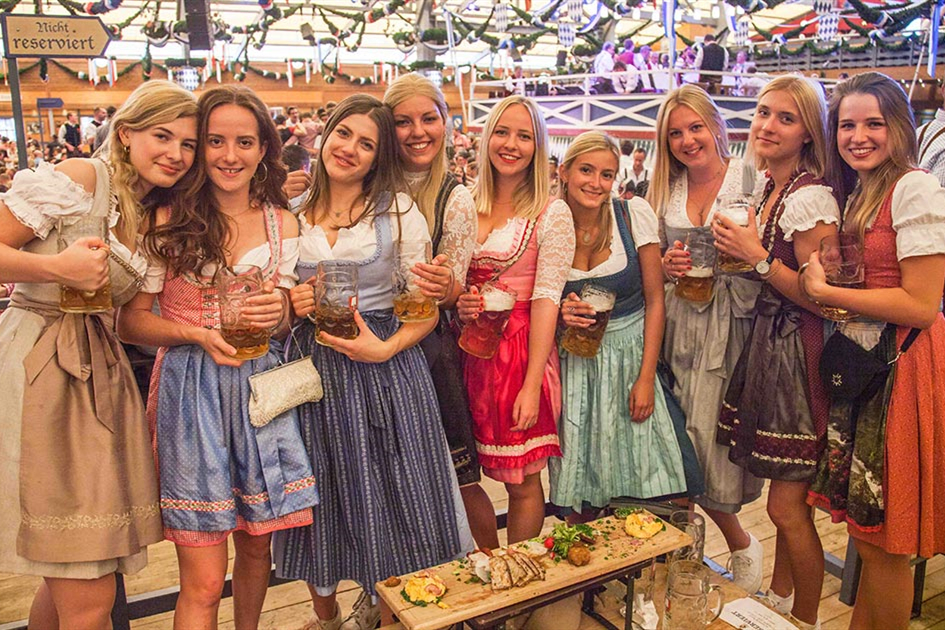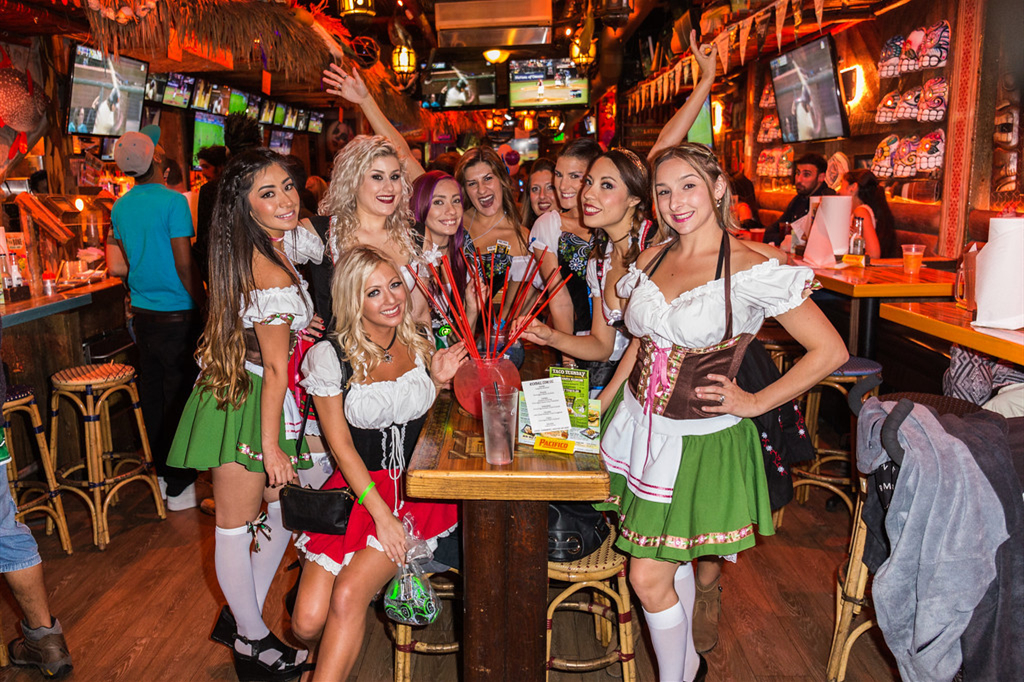HALLOWEEN COSTUMES
Today's Halloween Customs Are Thought To Have Been Influenced By Folk Customs And Beliefs From The Celtic-Speaking Countries, Some Of Which Are Believed To Have Pagan Roots. Jack Santino, a Folklorist, Writes That "There Was Throughout Ireland An Uneasy Truce Existing Between Customs And Beliefs Associated With Christianity And Those Associated With Religions That Were Irish Before Christianity Arrived". Historian Nicholas Rogers, Exploring The Origins Of Halloween Bad Habit Nun, Notes That While "Some Folklorists Have Detected Its Origins In The Roman Feast Of Pomona, The Goddess Of Fruits And Seeds, Or In The Festival Of The Dead Called Parentalia, It Is More Typically Linked To The Celtic Festival Of Samhain, Which Comes From The Old Irish For 'Summer's End'."

Samhain (/ˈSɑːWɪn, ˈSaʊɪn/) Was The First And Most Important Of The Four Quarter Days In The Medieval Gaelic Calendar And Was Celebrated On 31 October – 1 November In Ireland, Scotland And The Isle Of Man. A Kindred Festival Was Held At The Same Time Of Year By The Brittonic Celts, Called Calan Gaeaf In Wales, Kalan Gwav In Cornwall And Kalan Goañv In Brittany; a Name Meaning "First Day Of Winter". For The Celts, The Day Ended And Began At Sunset; Thus The Festival Began On The Evening Before 7 November By Modern Reckoning (The Half Point Between Equinox And Solstice).
Samhain And Calan Gaeaf Are Mentioned In Some Of The Earliest Irish And Welsh Literature. The Names Have Been Used By Historians To Refer To Celtic Halloween Customs Up Until The 19th Century, And Are Still The Gaelic And Welsh Names For Halloween.
Samhain/Calan Gaeaf Marked The End Of The Harvest Season And Beginning Of Winter Or The 'Darker Half' Of The Year. Like Beltane/Calan Mai, It Was Seen As a Liminal Time, When The Boundary Between This World And The Otherworld Thinned. This Meant The Aos Si The 'Spirits' Or 'Fairies', Could More Easily Come Into This World And Were Particularly Active.Most Scholars See The Aos Si As "Degraded Versions Of Ancient Gods Whose Power Remained Active In The People's Minds Even After They Had Been Officially Replaced By Later Religious Beliefs". The Aos Sí Were Both Respected And Feared, With Individuals Often Invoking The Protection Of God When Approaching Their Dwellings. At Samhain, It Was Believed That The Aos Sí Needed To Be Propitiated To Ensure That The People And Their Livestock Survived The Winter. Offerings Of Food And Drink, Or Portions Of The Crops, Were Left Outside For The Aos Sí.The Souls Of The Dead Were Also Said To Revisit Their Homes Seeking Hospitality. Places Were Set At The Dinner Table And By The Fire To Welcome Them. The Belief That The Souls Of The Dead Return Home On One Night Of The Year And Must Be Appeased Seems To Have Ancient Origins And Is Found In Many Cultures Throughout The World. In 19th Century Ireland, "Candles Would Be Lit And Prayers Formally Offered For The Souls Of The Dead. After This The Eating, Drinking, And Games Would Begin".
Throughout Ireland And Britain, The Household Festivities Included Rituals And Games Intended To Foretell One's Future, Especially Regarding Death And Marriage. Apples And Nuts Were Often Used In These Divination Rituals. They Included Apple Bobbing, Nut Roasting, Scrying Or Mirror-Gazing, Pouring Molten Lead Or Egg Whites Into Water, Dream Interpretation, And Others. Special Bonfires Were Lit And There Were Rituals Involving Them. Their Flames, Smoke And Ashes Were Deemed To Have Protective And Cleansing Powers, And Were Also Used For Divination. In Some Places, Torches Lit From The Bonfire Were Carried Sunwise Around Homes And Fields To Protect Them. It Is Suggested That The Fires Were a Kind Of Imitative Or Sympathetic Magic – They Mimicked The Sun, Helping The "Powers Of Growth" And Holding Back The Decay And Darkness Of Winter. In Scotland, These Bonfires And Divination Games Were Banned By The Church Elders In Some Parishes.In Wales, Bonfires Were Lit To "Prevent The Souls Of The Dead From Falling To Earth". Later, These Bonfires Served To Keep "Away The Devil".
From At Least The 16th Century, The Festival Included Mumming And Guising In Ireland, Scotland, The Isle Of Man And Wales. This Involved People Going House-To-House In Costume (Or In Disguise), Usually Reciting Verses Or Songs In Exchange For Food. It May Have Originally Been a Tradition Whereby People Impersonated The Aos Sí, Or The Souls Of The Dead, And Received Offerings On Their Behalf, Similar To The Custom Of Souling (See Below). Impersonating These Beings, Or Wearing a Disguise, Was Also Believed To Protect Oneself From Them. It Is Suggested That The Mummers And Guisers "Personify The Old Spirits Of The Winter, Who Demanded Reward In Exchange For Good Fortune". In Parts Of Southern Ireland, The Guisers Included a Hobby Horse. A Man Dressed As a Láir Bhán (White Mare) Led Youths House-To-House Reciting Verses – Some Of Which Had Pagan Overtones – In Exchange For Food. If The Household Donated Food It Could Expect Good Fortune From The 'Muck Olla'; Not Doing So Would Bring Misfortune. In Scotland, Youths Went House-To-House With Masked, Painted Or Blackened Faces, Often Threatening To Do Mischief If They Were Not Welcomed.F. Marian Mcneill Suggests The Ancient Festival Included People In Costume Representing The Spirits, And That Faces Were Marked (Or Blackened) With Ashes Taken From The Sacred Bonfire. In Parts Of Wales, Men Went About Dressed As Fearsome Beings Called Gwrachod.In The Late 19th And Early 20th Century, Young People In Glamorgan And Orkney Cross-Dressed.

Elsewhere In Europe, Mumming And Hobby Horses Were Part Of Other Yearly Festivals. However, In The Celtic-Speaking Regions They Were "Particularly Appropriate To a Night Upon Which Supernatural Beings Were Said To Be Abroad And Could Be Imitated Or Warded Off By Human Wanderers".From At Least The 18th Century, "Imitating Malignant Spirits" Led To Playing Pranks In Ireland And The Scottish Highlands. Wearing Costumes Witch Costumes And Playing Pranks At Halloween Spread To England In The 20th Century.Traditionally, Pranksters Used Hollowed Out Turnips Or Mangel Wurzels Often Carved With Grotesque Faces As Lanterns. By Those Who Made Them, The Lanterns Were Variously Said To Represent The Spirits,Or Were Used To Ward Off Evil Spirits. They Were Common In Parts Of Ireland And The Scottish Highlands In The 19th Century,As Well As In Somerset (See Punkie Night). In The 20th Century They Spread To Other Parts Of England And Became Generally Known As Jack-o'-Lanterns.
CHRISTMAS COSTUMES
The Nativity Sequences Included In The Gospels Of Matthew And Luke Prompted Early Christian Writers To Suggest Various Dates For The Anniversary. Although No Date Is Indicated In The Gospels, Early Christians Connected Jesus To The Sun Through The Use Of Such Phrases As "Sun Of Righteousness."The Romans Marked The Winter Solstice On December 25. The First Recorded Christmas Dresses Was In Rome On December 25, 336. In The 3rd Century, The Date Of The Nativity Was The Subject Of Great Interest. Around Ad 200, Clement Of Alexandria Wrote:
There Are Those Who Have Determined Not Only The Year Of Our Lord's Birth, But Also The Day; And They Say That It Took Place In The 28th Year Of Augustus, And In The 25th Day Of [The Egyptian Month] Pachon [May 20] ... Further, Others Say That He Was Born On The 24th Or 25th Of Pharmuthi [April 20 Or 21].

Various Factors Contributed To The Selection Of December 25 As a Date Of Celebration: It Was The Date Of The Winter Solstice On The Roman Calendar And It Was Nine Months After March 25, The Date Of The Vernal Equinox And a Date Linked To The Conception Of Jesus (Now Annunciation).
Christmas Played a Role In The Arian Controversy Of The Fourth Century. After This Controversy Ran Its Course, The Prominence Of The Holiday Declined For a Few Centuries. The Feast Regained Prominence After 800 When Charlemagne Was Crowned Emperor On Christmas Day. Later During The Protestant Reformation, The Puritans Banned Christmas In England, Associating It With Drunkenness And Other Misbehavior. It Was Restored As a Legal Holiday In England In 1660, But Remained Disreputable In The Minds Of Many People. In The Early 19th Century, Christmas Was Reconceived By Washington Irving, Charles Dickens, And Other Authors As a Holiday Emphasizing Family, Children, Kind-Heartedness, Gift-Giving, And Santa Claus.
Christmas Does Not Appear On The Lists Of Festivals Given By The Early Christian Writers Irenaeus And Tertullian. Origen And Arnobius Both Fault The Pagans For Celebrating Birthdays, Which Suggests That Christmas Was Not Celebrated In Their Time. Arnobius Wrote After Ad 297. The Chronography Of 354 Records That a Christmas Celebration Took Place In Rome In 336.
In The East, The Birth Of Jesus Was Celebrated In Connection With The Epiphany On January 6. This Holiday Was Not Primarily About The Nativity, But Rather The Baptism Of Jesus. Christmas Was Promoted In The East As Part Of The Revival Of Orthodox Christianity That Followed The Death Of The Pro-Arian Emperor Valens At The Battle Of Adrianople In 378. The Feast Was Introduced In Constantinople In 379, In Antioch By John Chrysostom Towards The End Of The Fourth Century, Probably In 388, And In Alexandria In The Following Century.
Mosaic Of Jesus As Christus Sol (Christ The Sun) In Mausoleum M In The Pre-Fourth-Century Necropolis Under St Peter's Basilica In Rome.
December 25 Was The Date Of The Winter Solstice On The Roman Calendar. A Late Fourth-Century Sermon By Saint Augustine Explains Why This Was a Fitting Day To Celebrate Christ's Nativity: "Hence It Is That He Was Born On The Day Which Is The Shortest In Our Earthly Reckoning And From Which Subsequent Days Begin To Increase In Length. He, Therefore, Who Bent Low And Lifted Us Up Chose The Shortest Day, Yet The One Whence Light Begins To Increase."

Linking Jesus To The Sun Was Supported By Various Biblical Passages. Jesus Was Considered To Be The "Sun Of Righteousness" Prophesied By Malachi: "Unto You Shall The Sun Of Righteousness Arise, And Healing Is In His Wings."
Such Solar Symbolism Could Support More Than One Date Of Birth. An Anonymous Work Known As De Pascha Computus (243) Linked The Idea That Creation Began At The Spring Equinox, On March 25, With The Conception Or Birth (The Word Nascor Can Mean Either) Of Jesus On March 28, The Day Of The Creation Of The Sun In The Genesis Account. One Translation Reads: "O The Splendid And Divine Providence Of The Lord, That On That Day, The Very Day, On Which The Sun Was Made, March 28, a Wednesday, Christ Should Be Born.
In The 17th Century, Isaac Newton, Who, Coincidentally, Was Born On December 25, Argued That The Date Of Christmas Elf Cosplay Was Selected To Correspond With The Solstice.
According To Steven Hijmans Of The University Of Alberta, "It Is Cosmic Symbolism ... Which Inspired The Church Leadership In Rome To Elect The Southern Solstice, December 25, As The Birthday Of Christ, And The Northern Solstice As That Of John The Baptist, Supplemented By The Equinoxes As Their Respective Dates Of Conception."
OKTOBERFEST COSTUMES
Oktoberfest (German Pronunciation: [ƆkˈToːBɐˌFɛst]) Is The World's Largest Volksfest (Beer Festival And Travelling Funfair). Held Annually In Munich, Bavaria, Germany, It Is a 16- To 18-Day Folk Festival Running From Mid- Or Late September To The First Sunday In October, With More Than Six Million People From Around The World Attending The Event Every Year. Locally, It Is Called d’Wiesn, After The Colloquial Name For The Fairgrounds, Theresienwiese. The Oktoberfest Costumes Is An Important Part Of Bavarian Culture, Having Been Held Since The Year 1810. Other Cities Across The World Also Hold Oktoberfest Celebrations That Are Modeled After The Original Munich Event.

During The Event, Large Quantities Of Oktoberfest Beer Are Consumed: During The 16-Day Festival In 2013, For Example, 7.7 Million Litres (66,000 Us Bbl; 1,700,000 Imp Gal) Were Served. Visitors Also Enjoy Numerous Attractions, Such As Amusement Rides, Sidestalls, And Games. There Is Also a Wide Variety Of Traditional Foods Available.
The Munich Oktoberfest Originally Took Place In The 16-Day Period Leading Up To The First Sunday In October. In 1994, This Longstanding Schedule Was Modified In Response To German Reunification. As Such, If The First Sunday In October Falls On The 1st Or The 2nd, Then The Festival Would Run Until 3 October (German Unity Day). Thus, The Festival Now Runs For 17 Days When The First Sunday Is 2 October And 18 Days When It Is 1 October. In 2010, The Festival Lasted Until The First Monday In October (4 October), To Mark The Event's Bicentennial.
Kronprinz Ludwig (1786–1868), Later King Ludwig I (Reign: 1825–1848), Married Princess Therese Of Saxe-Hildburghausen On 12 October 1810. The Citizens Of Munich Were Invited To Attend The Festivities Held On The Fields In Front Of The City Gates To Celebrate The Royal Event. The Fields Were Named Theresienwiese ("Theresa's Meadow") In Honour Of The Crown Princess, And Have Kept That Name Ever Since, Although The Locals Have Since Abbreviated The Name Simply To The "Wiesn". Horse Races, In The Tradition Of The 15th-Century Scharlachrennen (Scarlet Race At Karlstor), Were Held On 18 October To Honor The Newlyweds. It Is Widely Understood That Andreas Michael Dall'Armi, a Major In The National Guard, Proposed The Idea. However, The Origins Of The Horse Races, And Oktoberfest Itself, May Have Stemmed From Proposals Offered By Franz Baumgartner, a Coachman And Sergeant In The National Guard. The Precise Origins Of The Festival And Horse Races Remain a Matter Of Controversy, However, The Decision To Repeat The Horse Races, Spectacle, And Celebrations In 1811 Launched What Is Now The Annual Oktoberfest Tradition.

The Fairground, Once Outside The City, Was Chosen Due To Its Natural Suitability. The Sendlinger Hill (Today Theresienhohe) Was Used As a Grandstand For 40,000 Race Spectators. The Festival Grounds Remained Undeveloped Except For The King's Tent. The Tastings Of "Traiteurs" And Other Wine And Beer Took Place Above The Visitors In The Stands On The Hill. Before The Race Started, a Performance Was Held In Homage Of The Bridegroom And Of The Royal Family In The Form Of a Train Of 16 Pairs Of Children Dressed In Wittelsbach Costumes, And Costumes From The Then Nine Bavarian Townships And Other Regions Beer Costumes. This Was Followed By The Punishing Race With 30 Horses On An 11,200-Foot (3,400 Meters) Long Racetrack, And Concluded With The Singing Of a Student Choir. The First Horse To Cross The Finish Line Belonged To Franz Baumgartner (One Of The Purported Festival Initiators). Horse Racing Champion And Minister Of State Maximilian Von Montgelas Presented Baumgartner With His Gold Medal.
HERVE LEGER BANDAGE DRESSES
Herve Leger, Who Has Died Aged 60, Was The French Couturier Who Created The Bandage Dress – Hailed As One Of The Iconic Dresses Of All Time, It Made Its Way From Catwalks To The High Street.
Made For Women With “With a Bosom, a Waist And Curves”, The Herve Leger Bandage Dress Became a Hit With The “Body Conscious” Hollywood Jet Set Of The 1990s And Noughties And Brought a New Sexiness To The Catwalk, Personified By Cindy Crawford, Plus a Plethora Of Actresses.
Liz Hurley Was Also One Of The Early Adopters Of The Dress.

With Success, Leger Needed To Expand His Business Into Ready-To-Wear In Order To Compete In The 1990s. Financial Backing Came From The Canadian Drinks Conglomerate Seagram. Initially, All Seemed Well With Leger Producing 8,000 Pieces a Season, As Against 160 Two Years Earlier. However, With More And More Investment Forthcoming, Leger’s Holding Diminished Until Seagram Owned 95 Per Cent Of The Business.
To His Consternation, It Then Sold The Company To La-Based Max Azria’s Bcbg. Within a Year He And Azria Had Fallen Out. Leger Found Himself Fired From His Own Label And Lost The Rights To The Leger Name.
Born In 1957, In The Small Town Of Bapaume, 20 Miles South Of Arras, Northern France, Herve Peugnet Left Home At 18 And Headed To Paris To Study Sculpture And Art History At The ecole Nationale Superieure Des Beaux-Arts. After Just a Year, However, He Dropped Out, Later Recalling, “It Was The Seventies, And Everyone Was On Strike”.
Wanting a Job That Made Use Of His Hands And His Curiosity About The Properties All Types Of Fibres, He Embarked Upon a Hairdressing Apprenticeship – Effectively Training With a Difficult Fibre. Soon He Was Working Backstage At Fashion Shows For Houses Such As Chloe And Ysl. He Was Taught Himself To Make Hats And Dresses, And Secured Contract Work For Lanvin, Swarovski And Costume Designer Tan Giudicelli.
It Was a Meeting At a Chloe Dinner Party In 1980, With German Couturier Karl Lagerfeld, However, Which Was To Change His Direction And His Life. “The Kaiser” Wanted a New Assistant And Asked To See Peugnet’s Sketches. Although Less Than Impressed, Lagerfeld Took Him On. The Pair Work Together At Fendi In Rome And Then Back At Chanel In Paris.
Four Years Later, Peugnet Was Ready To Set Up His Own Business. On The Advice Of Lagerfeld, Claiming It Was Too Difficult For Anglophones To Pronounce, Peugnet Changed His Name To Leger, Taken From The French Word “Legèrete” – Lightness.
The Label Herve Leger Bandage Dresses Launched In 1985 And, By The Late 1980s, The Bandage Dress Had Arrived, Which Appealed Because Of Its Tightness And Ability To Hold The Figure Positively, In And Up – This Allowed Unrestricted Poses For The Cameras. His First Full Collection In This Style Was Shown In 1991.
The Inception Of “The Bandage Dress Was a Simple One,” He Once Recalled. “One Day In a Factory, I Found Some Bands That Were Headed For The Garbage. As a Hat Maker, They Gave Me The Idea Of Taking Those Bands And Putting Them Next To One Another As One Does Making a Hat, Using The Elastic Properties Of The Material (Rather Than Draping) To Provide Its Form.
He Also Designed Active Swimwear And Tights, Too. In 1994 Ballet Costumes For Roland Petit’s Company At The Paris Opera.
Following The Loss Of His Label, Leger Kept a Lower Profile Until 2000, When He Founded His Own Independently Financed Fashion House With His Sister Jocelyne: Herve L Leroux. This New Surname Was Again Suggested By His Friend And Mentor Lagerfeld. He Had Chosen Leroux On The Basis That Leger Had Once Had Red Hair “And Everyone Will Know Who You Are.”

The Fledgling Business Struggled Financially, However, Although Leger Persisted, Making Couture And Swimwear For Private Clients. Between 2004 And 2006, He Worked As Creative Director At Guy Laroche, Dressing Hilary Swank In a Memorable Backless Midnight-Blue Jersey Gown, For The 2005 Oscars Where She Won Best Actress. He Also Worked For The High-End Austrian Manufacturer Wolford.
In 2007, Azria Launched His Version Of Herve Leger Bandage Dresses, Worn By The Likes Of Kim Kardashian, Which Paradoxically Raised Leroux’s Profile. He Subsequently Started Getting New Clients From All Spheres Of The Celebrity World, Including Cate Blanchett, Kylie Minogue, Jemima Khan, Naomi Watts, Taylor Swift And Kim Kardashian.
His Passion Was Still In Garments That Clung To a Female Form But He Had Begun To Use Different Techniques To Mould The Body, Replacing Strip And Panel Structures With Draped Cloth, Working In Soft Viscose And Silk Jerseys – An Elegant Departure From The Skin-Tight Silhouette Of The Bandage Dress. Dita Von Teese Noted Leroux Was In The Same Classical Class As The Great Parisian Couturière Madame Grès, Both Having Been Inspired By The Materials Depicted In Greek Sculpture.
Leroux Was Loved For Always Managing To Accentuate His Clients’ Positives And Eliminate Their Negatives. He Liked To See Women Confident, Even Happy, And Lamented The Cult Of Starvation Among Modern-Day Models, Declaring, “His Draperies Were Meaningless On Coat Hangers.”
In 2013, Leroux’s Comeback Was Complete When The Federation De La Haute Couture Asked Him To Return To The Paris Collections As a Guest, Recognising His Deserved Place As An Original. Perhaps Somewhat Ironically, Bcbg Filed For Bankruptcy In March Of This Year. Leger Died Of a Ruptured Aneurysm, And Is Survived By His Sister.
THE HISTORY OF HERVE LEGER
Though Herve Leger Is Famous In The Fashion World, Very Few Know About The Brand's History. Herve Leger Bandage Dresses Have Only Been In Production From 1989-1997 And From 2008-Present.
These Are Some Of My Favorite Quotes From Herve Peugnet, The Creator Of Cheap Herve Leger. They Explain Exactly Why So Many Women Love These Form-Fitting Dresses.

Herve Peugnet Has An Extremely Impressive Fashion Resume. At The Early Age Of 23, Fashion God, Karl Lagerfeld Recognized His Talent And Took Him Under His Training. During His Career, He Has Contributed To The Designs Of Chanel, Lanvin, Fendi, Diane Von Furstenburg, Chloe And Swarovski.
At Age 28, He Begins Working For Himself, Creating The Herve Leger Line. 4 Years Later, Bandage Dresses Were Born! They Were Inspired By His Experience In Designing Bathing Suits And Some Throwaway Seam Bindings. The First Bandage Dress Was Also The Finale Look Of Herve Leger's 1989 Runway Show. The Bandage Dress, Originally Called "Bender Dress" Became An Instant Sensation. They Were Called "Bender," Because They Molded The Body Into The Perfect Female Form.
Let's Take a Moment And Admire The Beauty Of Vintage Herve Leger Dresses
You Can Find Megan Fox's Dress Here. Please Note That The Dress As Seen On Megan Fox Is Highly Counterfeited.
These Vintage Dresses Are Completely Timeless. Hot Then, And Still Hot Now!

Before Herve Leger Was Acquired By Bcbg, Herve Peugnet Designed Some Very Exclusive Dresses. These Were Tagged Herve Leger Sale Couture. A Mannequin Would Be Created Based On The Exact Measurements Of His Client. Then, Keeping The Client's Best Features In Mind, a Truly Special Dress Would Be Meticulously Made.
Because Herve Peugnet Was Not The Majority Holder Of Herve Leger, The Company Was Sold To Bcbg Is 1998. Shortly Thereafter, Bcbg Halts Production On Bender Dresses And Fires Herve Peugnet. Bender Dresses, Now Bandage Dresses Were Relaunched In 2008 Under Bcbg Max Azria Herve Leger. Many Today Do Not Realize That Herve Leger Dresses Were Around Much Earlier Than 2008. Herve Peugnet Still Designs Absolutely Beautiful Clothing. They Are Now Designed Under Herve Leroux, a Name That Was Suggested By His Dear Friend Karl Lagerfeld.